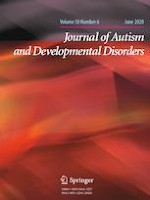28-02-2019 | Original Paper
A Study of Asian Children Who are Diagnosed with Autism Spectrum Disorder and Available Support Services in Auckland, New Zealand
Gepubliceerd in: Journal of Autism and Developmental Disorders | Uitgave 6/2020
Log in om toegang te krijgenAbstract
This study reviews the demographic characteristics of Asian children diagnosed with autism spectrum disorder (ASD) in Auckland, New Zealand, the support services they can access, and how more equitable access to health services can be provided. We examined government and non-government support services for Asian children diagnosed with ASD and their families. The findings reflect the complexities of navigating and accessing health, disability, education and social support services. Analysis of Ministry of Health Disability Support Services (DSSs) data suggest that Asians in New Zealand are underrepresented in utilizing DSSs. Drawing on Andersen’s health care utilization model, suggestions for more equitable access to health, disability, education and social support include culturally and linguistically appropriate health care and social policies.
